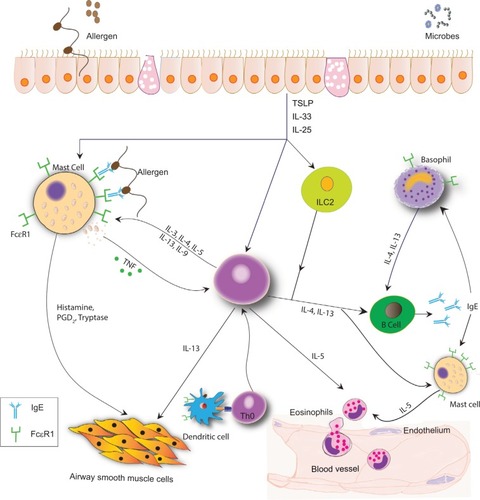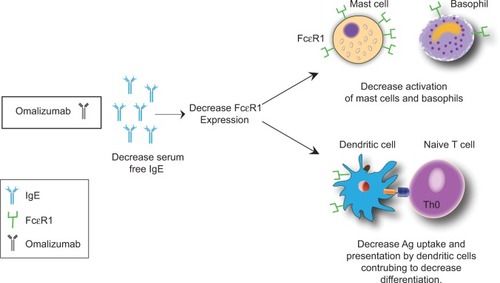Figures & data
Figure 1 Complex cross talk in T2 high inflammation.

Figure 2 Omalizumab causes a decrease in serum free IgE.

Figure 3 A way to categorize patients with moderate–severe asthma in clinical settings using available biomarkers.
Abbreviation: FeNO, fractional exhaled nitric oxide.

